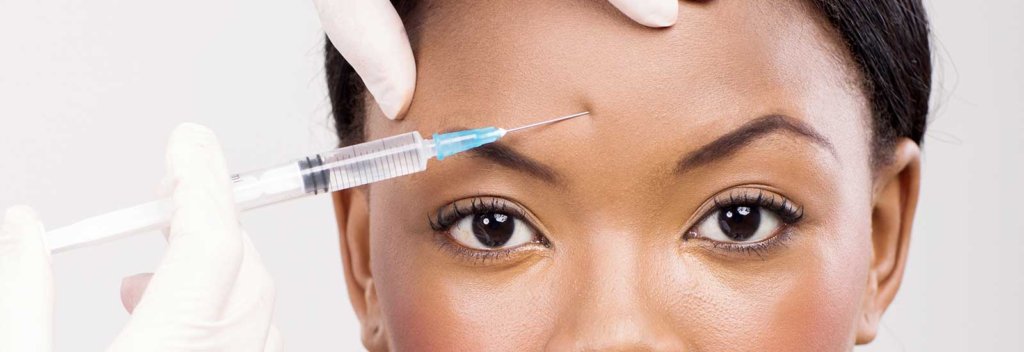Understanding Botox Treatment: A Physician’s Precision
Botox administration is both an art and a science. It involves far more than just injecting a neurotoxin into the skin. Top-tier Botox results rely heavily on a physician’s detailed knowledge of facial anatomy, individualized planning, and skilled technique. Unlike over-the-counter cosmetic procedures or automated skincare tools, Botox requires clinical training, licensing, and a deep understanding of muscle dynamics.

Consultation and Assessment
Before a single unit of Botox is administered, experienced physicians begin with a comprehensive facial assessment. This includes evaluating muscle strength, skin elasticity, symmetry, and the patient’s aesthetic goals. Doctors consider how your facial muscles contract naturally and how that contributes to dynamic wrinkles in common areas like the forehead, crow’s feet (sides of the eyes), and the glabella (frown lines between the eyebrows).
An ethical and professional practitioner never rushes this step. They invest time in listening to the patient’s concerns, examining the facial structure, and discussing anticipated outcomes. This thoughtful approach is foundational in customizing the dosage for each area.
Precision in Targeting the 3 Facial Areas
The most commonly requested facial areas for Botox are:
- Forehead lines
- Glabellar lines (between the brows)
- Crow’s feet (around the eyes)
Each of these areas requires a specific strategy:
Forehead Lines
Botox in the forehead must be administered with extreme caution. An overly aggressive approach can cause unnatural flattening or even drooping of the brows. Physicians map out the injection sites while factoring in brow shape, muscle thickness, and the risk of diffusion. They typically use fewer units at first and increase only with patient consent in follow-up visits.
Glabellar Lines (Frown Lines)
The muscles responsible for frowning—primarily the corrugator and procerus—are strong and deeply embedded. A skilled doctor injects Botox in strategic points to relax these muscles without impacting nearby areas such as the eyelids or upper nose. Correct placement here can soften an angry or tense appearance and create a more open, relaxed expression.
Crow’s Feet
Around the eyes, the orbicularis oculi muscles control blinking and squinting. Treating crow’s feet requires precision to avoid affecting natural eye movements. Only highly trained injectors understand how to strike a balance between softening wrinkles and preserving expressiveness. These injections are placed superficially and in a fan-like pattern to achieve smooth, natural results.
Why the Doctor’s Role Is Central to the Outcome
Unlike many skincare treatments that can be standardized, Botox requires case-by-case analysis and artistry. The doctor’s expertise determines:
- The total number of units used per area
- The specific injection points and depth
- The sequence and timing of administration
- The prevention of complications such as ptosis (eyelid drooping) or asymmetric results
Doctors also evaluate muscle strength—some individuals may require more or fewer units depending on their facial activity. A seasoned injector avoids the one-size-fits-all approach and tailors the procedure for each face.
The Art of Facial Harmony and Botox
While clients may request specific areas, expert physicians treat the face as an interconnected unit. For example, relaxing the forehead without addressing the glabella can lead to overcompensation in adjacent muscles, creating imbalance or unnatural movement. A trained aesthetic doctor may recommend treating all three zones in unison for optimal harmony.
Physicians often plan the procedure in terms of overall expression. Do you want a refreshed look? A lifted brow? A reduction in severe frown lines? Your treatment plan reflects not just the number of areas, but also your desired emotional appearance.
Follow-Up and Refinement: The Doctor’s Commitment
The most reputable Botox providers schedule a follow-up 10 to 14 days after the initial session. At this appointment, they assess muscle response and adjust treatment if needed. This step ensures that the results are symmetrical, effective, and natural-looking.
Only experienced medical professionals can evaluate neuromuscular response and decide whether a touch-up is necessary. This process further underscores why the doctor’s role is integral—not just at injection but throughout your Botox journey.
Benefits of Doctor-Led Botox Treatment
Botox administered by a licensed, skilled physician offers a variety of benefits that go far beyond wrinkle reduction:
- ✦ Safe and sterile procedures
- ✦ Minimally invasive with predictable results
- ✦ Custom-tailored doses and placements
- ✦ Preservation of natural facial expressions
- ✦ Reduced risk of complications
- ✦ Professional guidance on future treatments and maintenance
Receiving Botox from a qualified doctor is an investment in both aesthetics and safety.
Choosing a Qualified Botox Provider
When selecting a provider for Botox, particularly when treating three areas, ensure the doctor:
✔️ Is board-certified in dermatology, cosmetic medicine, or plastic surgery
✔️ Has extensive experience in facial anatomy and neuromodulators
✔️ Uses FDA-approved Botox brands
✔️ Provides a clear consultation and post-treatment care
✔️ Offers a follow-up visit to evaluate results
Don’t base your decision solely on cost or promotions. The skill and credibility of the provider have a direct impact on your safety and aesthetic outcome.
Professional Approach vs. Non-Expert Application
While medical spas and aesthetic clinics may offer Botox, it’s essential to verify who is performing the procedure. A medical-grade treatment plan demands the attention of a certified physician or a licensed injector under direct medical supervision. Poorly performed Botox can result in:
- Overcorrection or frozen appearance
- Muscle weakness or unintended droop
- Uneven or patchy effects
- Greater expense in corrective procedures
You deserve precision and personalization—qualities only an expert physician can provide.
Long-Term Perspective on Botox Treatments
One of the less-discussed aspects of Botox is its role in long-term facial aging. Physicians trained in preventative aesthetic medicine use Botox strategically to minimize muscle overuse, preserving skin quality and delaying deeper wrinkle formation.
Rather than reacting to existing lines, professional Botox plans are designed with foresight. Doctors evaluate not only where lines exist now but where they are likely to deepen over time. This forward-thinking approach positions Botox not just as a quick fix, but as part of a holistic facial aging strategy.
Final Thoughts
Botox remains a powerful tool in aesthetic medicine when performed by a qualified doctor. Each facial area—whether forehead, glabella, or crow’s feet—demands clinical understanding, precise technique, and personalized care. The beauty of Botox lies in its subtlety, and only a skilled physician can deliver those refined, natural-looking results.































